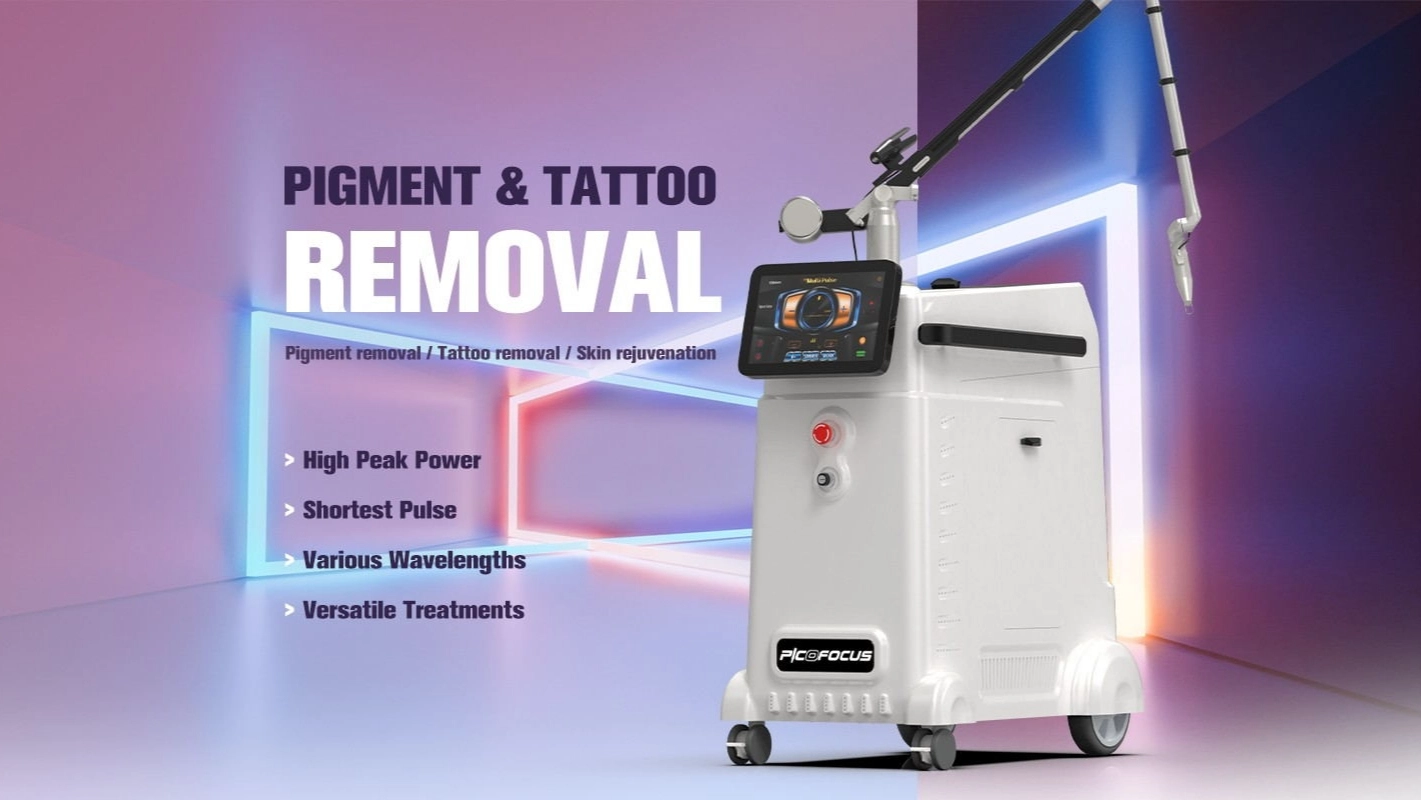Laser tattoo removal has really stepped up its game lately. Two systems are stealing the show: Q-switched lasers and picosecond lasers. If you’re thinking about getting rid of a tattoo, figuring out how these machines differ can make all the difference in getting great results. This article lays out how they stack up—how well they zap ink, how safe they are, how they feel, and if they’re worth the cash. It’s here to help you pick the best laser for the job.

Understanding Laser Technology for Tattoo Removal
How Lasers Get Rid of Tattoo Ink
Laser tattoo removal shoots powerful light into your skin to break up ink buried in the dermis. Q-switched lasers fire quick pulses—think nanoseconds—that heat up and crack the ink apart. Picosecond lasers, though, go even faster with super-short light bursts. They use more physical force than heat to do the trick.
Pico lasers work with light pulses, not like older lasers that rely on heat. “Pico” means one trillionth of a second. Picture flicking a light switch on and off a trillion times in one second! That’s how fast the light hits your skin.
Why Pulse Speed Matters for Ink
How long a laser pulse lasts is a big deal for breaking up ink. Q-switched lasers use nanosecond pulses (a billionth of a second). Picosecond lasers are lightning-fast, working in trillionths of a second.
These quick pico pulses hit the skin and make a “pressure wave.” This wave locks onto stuff like tattoo ink or skin blemishes. It squishes the cells and breaks them into tiny pieces. Your body can then clear them out way easier.
Checking How Well They Work
How Fast Tattoos Fade Away
Studies say picosecond lasers make tattoos disappear quicker than Q-switched ones.
Pico lasers are great for colored tattoos. They help your skin heal fast. One study showed 69-100% of tattoos faded by over 70% after 1-10 pico sessions.
Q-switched lasers usually need more sessions since they rely on heat to break up ink.
Results on Different Colors and Skin Types
Pico lasers shine when it comes to multicolored tattoos or stubborn colors like green and blue. They smash ink into smaller bits, so tattoos fade faster, no matter the shade.
Pico lasers first became popular for tattoos because they handle dark pigments better than older lasers.
Looking at Safety and Skin Effects
Risk of Scarring or Skin Marks
Safety is huge when picking a laser. Pico lasers don’t heat up the skin as much because of their fast pulses. This cuts down on scarring or lasting skin color changes.
Right after a session, your skin might look a bit white or “frosty.” It clears up fast once the treatment’s done.
Q-switched lasers can sometimes cause post-inflammatory hyperpigmentation (PIH). That risk goes up if they’re not used right or on sensitive skin.
Good for Sensitive or Darker Skin?
Pico lasers keep heat low, so they’re safer for darker skin that’s prone to PIH. They’re super precise and don’t mess with nearby melanin-packed skin. This makes them awesome for Fitzpatrick skin types IV-VI.
Breaking Down Treatment Time and Sessions
How Many Sessions to Zap a Tattoo
Pico lasers mean you need fewer sessions.
Small tattoos might only take 3-5 sessions. Bigger ones could need more. Q-switched lasers often take 8-12 sessions, depending on how deep or bright the ink is.
How Long Sessions and Healing Last
Pico lasers work fast and don’t rough up the skin as much. That keeps sessions short. Healing is quicker too, with less redness or soreness.
Pico lasers handle colored inks like a champ and let your skin recover fast. You can get back to your usual stuff sooner than with older machines.
How Comfortable Is It?
What It Feels Like
Both lasers can sting a bit, kind of like getting a tattoo. But folks often say pico lasers hurt less since they don’t heat the skin as much.
For some people, laser tattoo removal feels a bit like getting inked. But it’s over quick.
Ways to Keep It Comfy
Cooling tricks, like special tips or chilly sprays, make it easier to handle. Some machines even have sapphire crystal surfaces to keep your skin cool during the session.
What Else Can the Equipment Do?
More Than Just Tattoos (e.g., Skin Spots, Acne Scars)
A top-tier pico laser isn’t just for tattoos—it’s got other skills.
Pico lasers services are awesome at clearing up skin pigmentation. They tackle stuff like sun spots, marks from old zits or cuts, melasma, freckles, or other skin discolorations. These might need 3 or 4 sessions to fade a bunch.
They can also help with acne scars by getting collagen to grow deep in the skin.
Works for Different Skin Issues
Pico lasers don’t cause much heat damage while targeting things like ink or melanin. This makes them great for sensitive skin issues, like rosacea or melasma, without making things worse.
Thinking About Cost and Value
Upfront Cost vs. Long-Term Wins
Pico laser machines might cost more to buy than Q-switched ones. But they’re so good that clients need fewer sessions. That saves time and brings in more cash over time. Clinics can also offer extras like fixing skin spots or scars.
Maintenance and Running Costs
Modern pico lasers are tough and easy to use. That means less time fixing them. They use fewer supplies per session than older machines. With happier clients, pico lasers are a solid deal, even with the bigger price tag up front.

If a clinic wants to crush it in speed, safety, versatility, and keeping clients stoked, the choice is a no-brainer: grab top-notch gear like Nubway’s picosecond laser systems. These machines are a total game-changer for tattoo removal. They zap ink fast and are safe for all skin types. They’re comfier during sessions too. Plus, they can tackle skin spots, acne scars, and other stuff, making them crazy versatile. Yeah, they cost more at the start, but fewer sessions, faster healing, and more treatment options make them a smart move. Going with a pico laser puts a clinic at the top of the aesthetic tech game. It brings killer results and keeps clients coming back for more.
FAQ
Q: Who is a good candidate for laser tattoo removal?
A: Anyone with an unwanted tattoo can consider laser removal, but suitability depends on factors like skin type, tattoo size, and health conditions. People with darker skin tones may benefit more from picosecond lasers due to lower risks of pigmentation changes. Consult a professional to assess your specific case.
Q: How do I prepare for a laser tattoo removal session?
A: Before treatment, avoid sun exposure, tanning, or using skin products with retinoids or acids for at least two weeks. Stay hydrated, avoid alcohol, and inform your technician about any medications or skin conditions. Shaving the area may be needed, but don’t wax or pluck.





